It’s that time of year again! The annual battle between Man and Gull, as Herring gulls nest on roofs and chimneys around the town! Let me start by saying that I love Herring gulls – it would be a dull world without them – but I totally understand why not everybody wants them nesting on their roof, and take measures to try and prevent this.
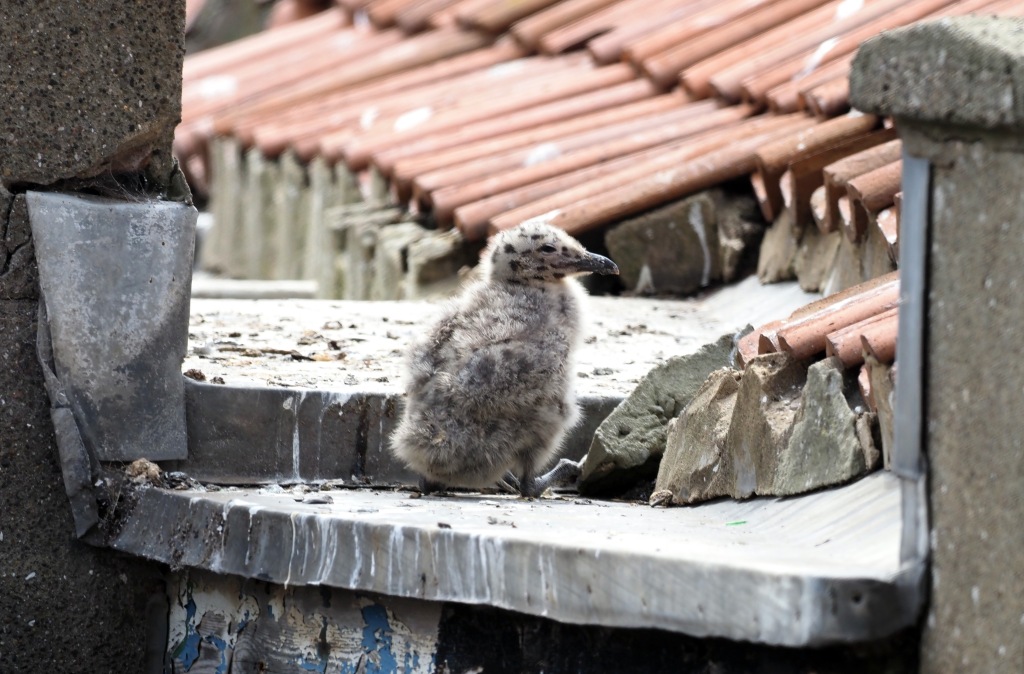
I wrote about this before (Silly seabird season! Herring gull chicks), but I think it is a topic worth revisiting, as everyone who visits seaside towns has an opinion on the ‘sea gulls’. To many residents, nesting Herring gulls (and Kittiwakes) can be a pest, causing a mess, and damage to property. To try and prevent the gulls from nesting, some house holders resort to all sorts of measures, spikes and mesh being the most common. These defences are however, only partially successful, and the gulls seem to be very clever at building nests which mostly avoid the spikes (see below).
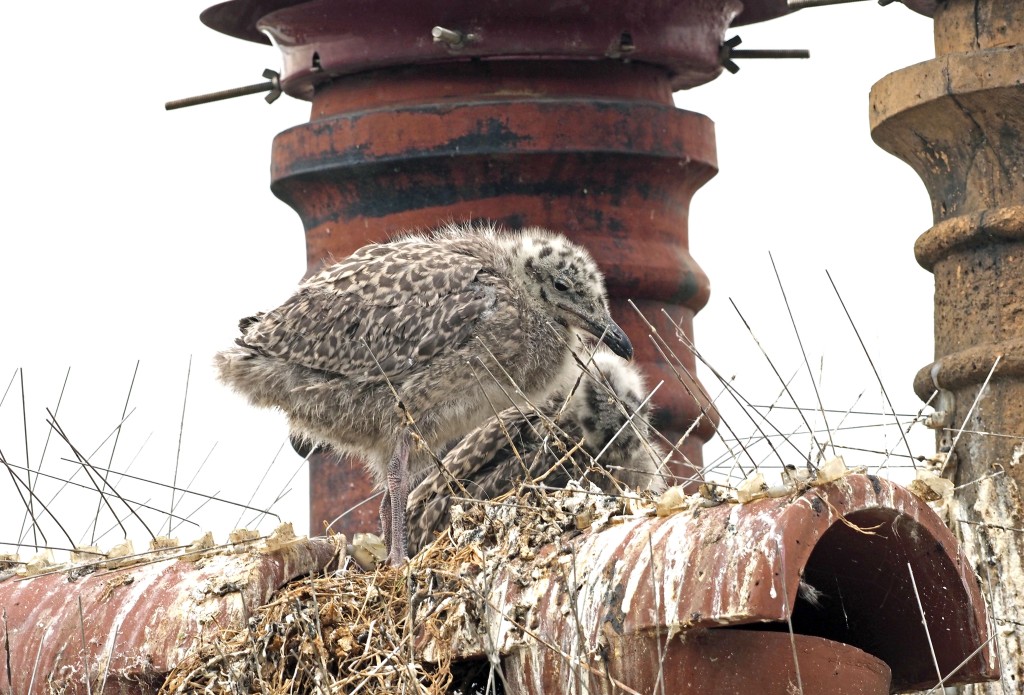
Some nests are quite large and the adults have collected a surprising amount of nesting material (see below).
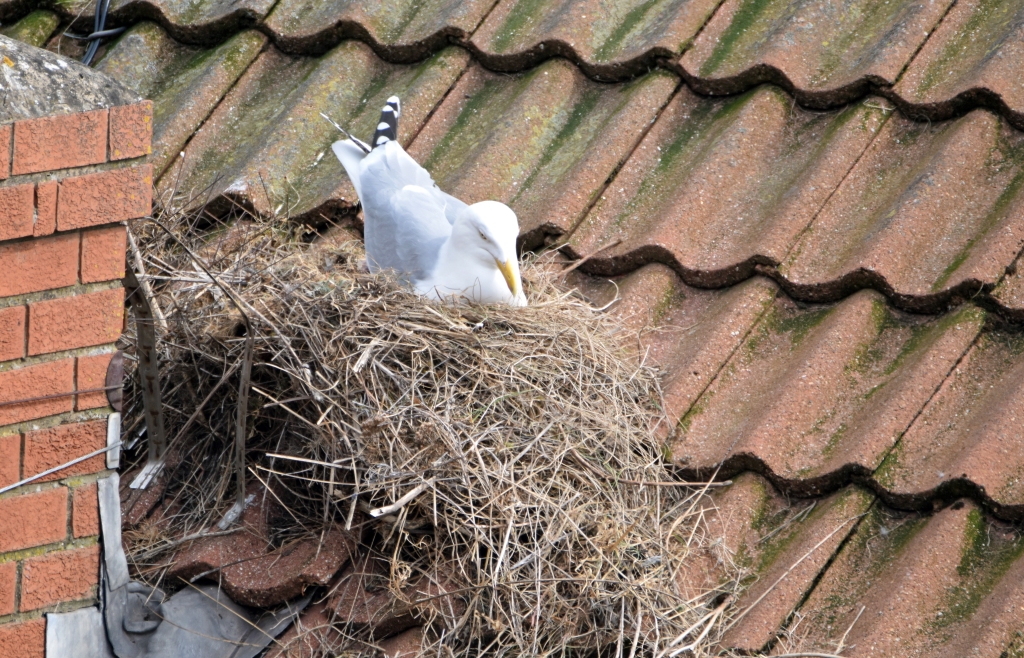
Measures can however, be successful in preventing gulls from nesting, but this often just pushes the problem onto a neighbouring roof! I noticed that the owners of this flat roof seem to have been successful in preventing nesting this year (below, right). Last year, three chicks hatched out and grew up on this little space (below left).
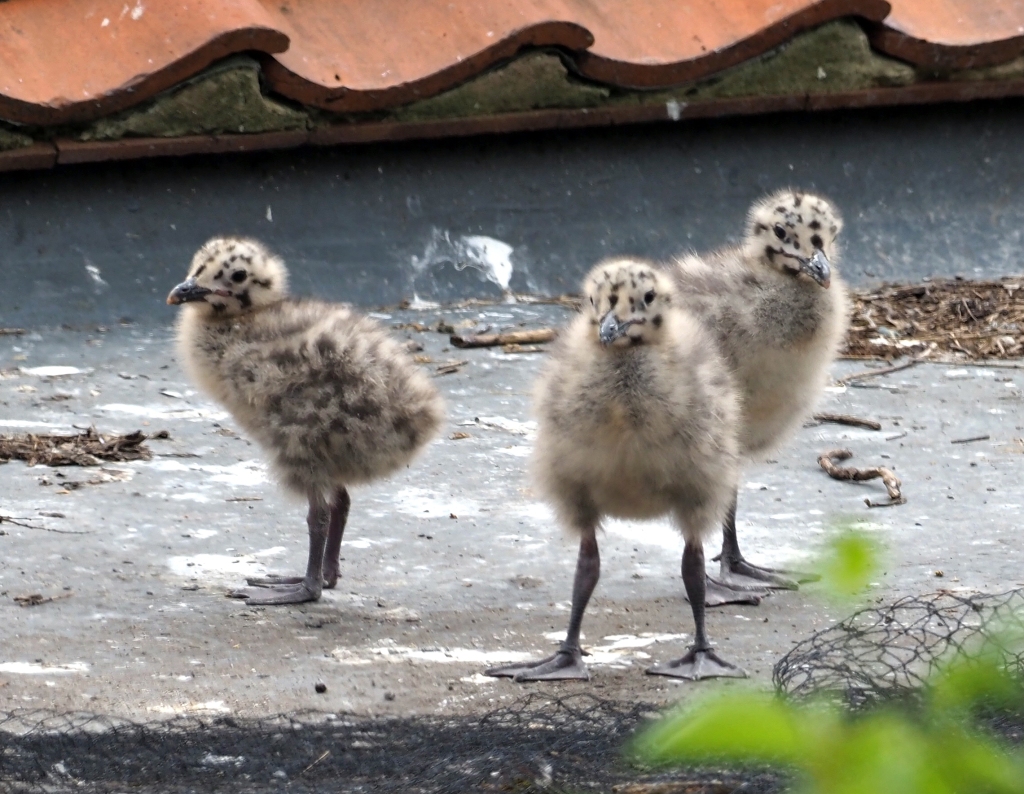

All species of gull are protected under the Wildlife and Countryside Act 1981 in England, which means that it is illegal to intentionally kill any gull or damage or destroy an active nest or its contents. However, the number of roof nesting gulls has, I think, steadily increased in many seaside towns around Britain, although overall numbers of Herring gulls have declined significantly over the last 30 years or so. In Scarborough (as well as Whitby and Filey), the Borough Council have launched a ‘gull proofing property scheme’ for private buildings, and will contribute 50% (up to a maximum of £2,000) towards the costs of gull proofing any buildings located in defined areas in these towns. See the council Seagulls advice and information.
Despite their being a bit of a pest, the reason that I can’t help but admire Herring gulls, is that they are at least, one species on Earth that has not simply been steamrollered into decline and extinction by Man. Although numbers are declining – RSPB figures suggest the UK breeding population of herring gulls has declined from 750,000 pairs in 1993 to 378,000 pairs in about 2010 – they have adapted to us humans to some extent. Strutting up and down our high streets, stealing our ice creams, ripping open our plastic rubbish bags and generally making a nuisance of themselves in the process! Only, some individuals behave in this way however, and if we leave our rubbish lying around, what do we expect? Bag it up properly.
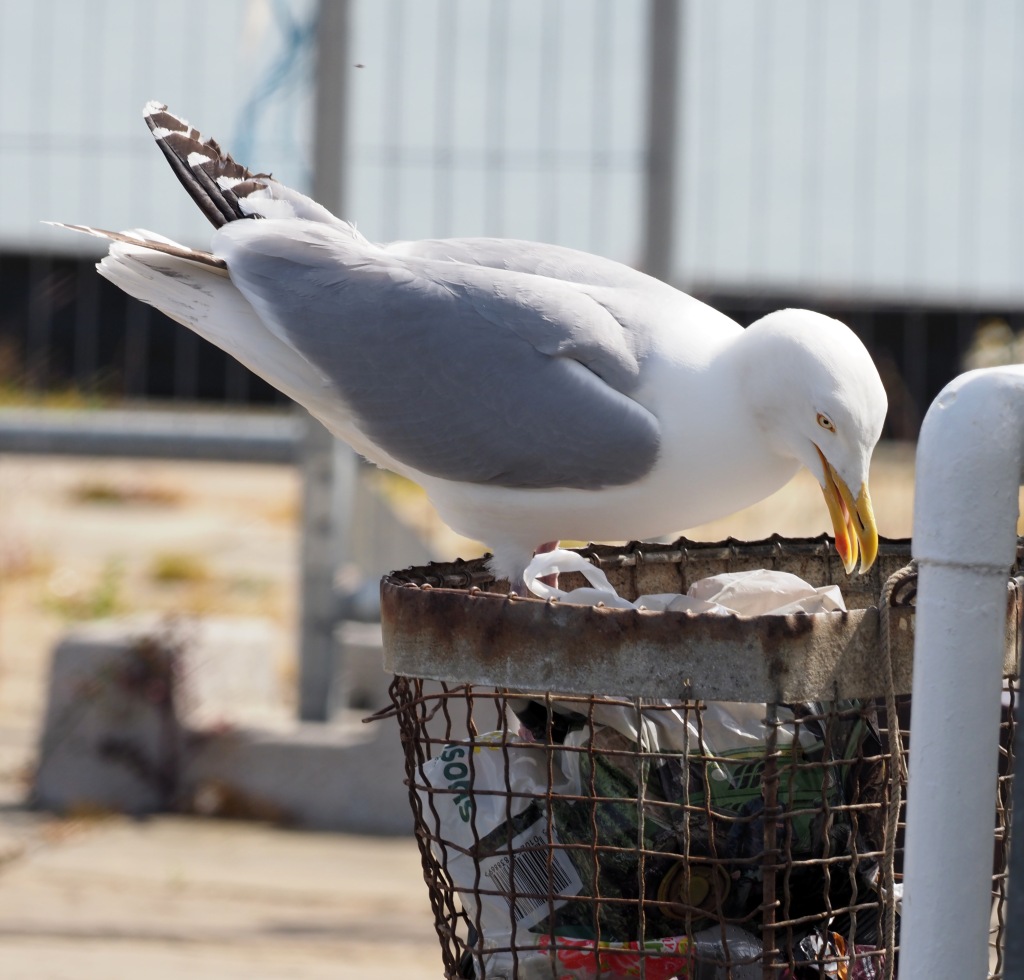
The casualty rate for roof-nesting Herring gulls seems to be quite high: many fall off (see below) and die, or wander around the streets being fed occasionally, we can assume, by the parents. A lot of these ones also get run over by cars.
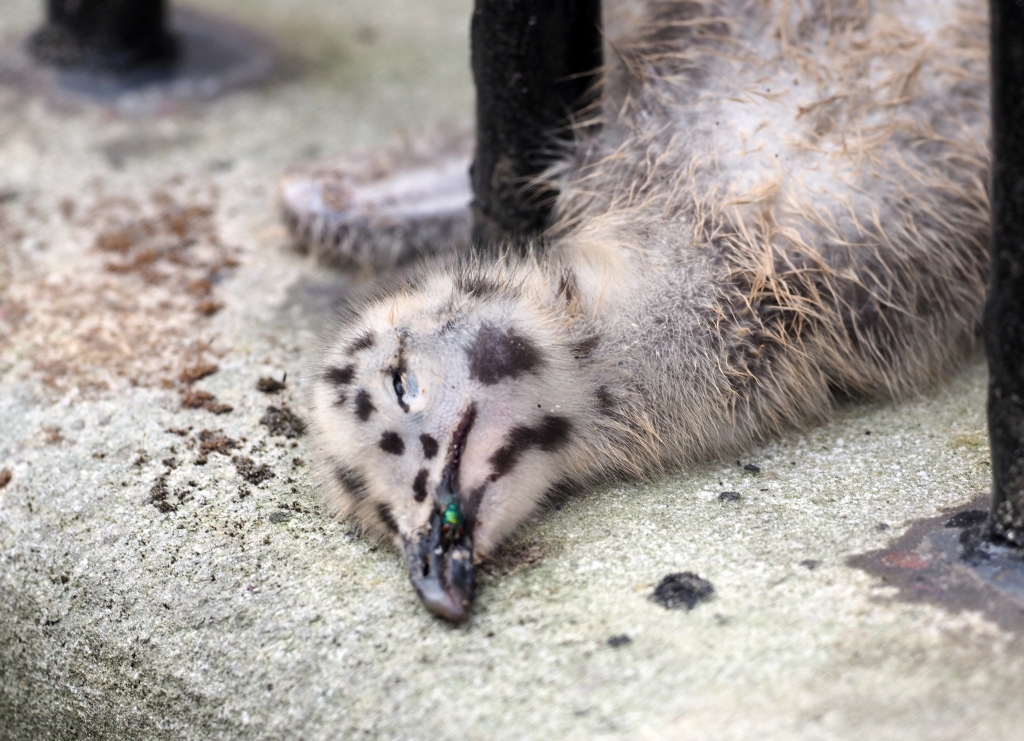
Some chicks wander the streets making plaintive cries. There is much debate about whether to feed these wanderers (below); the consensus seems to be to leave them alone and let the parents feed them.

Eventually, the survivors – the fittest or simply the lucky ones? – end up as a rather beautiful juvenile birds, still begging off their parents as summer turns into autumn, but also learning to scavenge and survive in the habitat we have created for them on the edge of the sea.


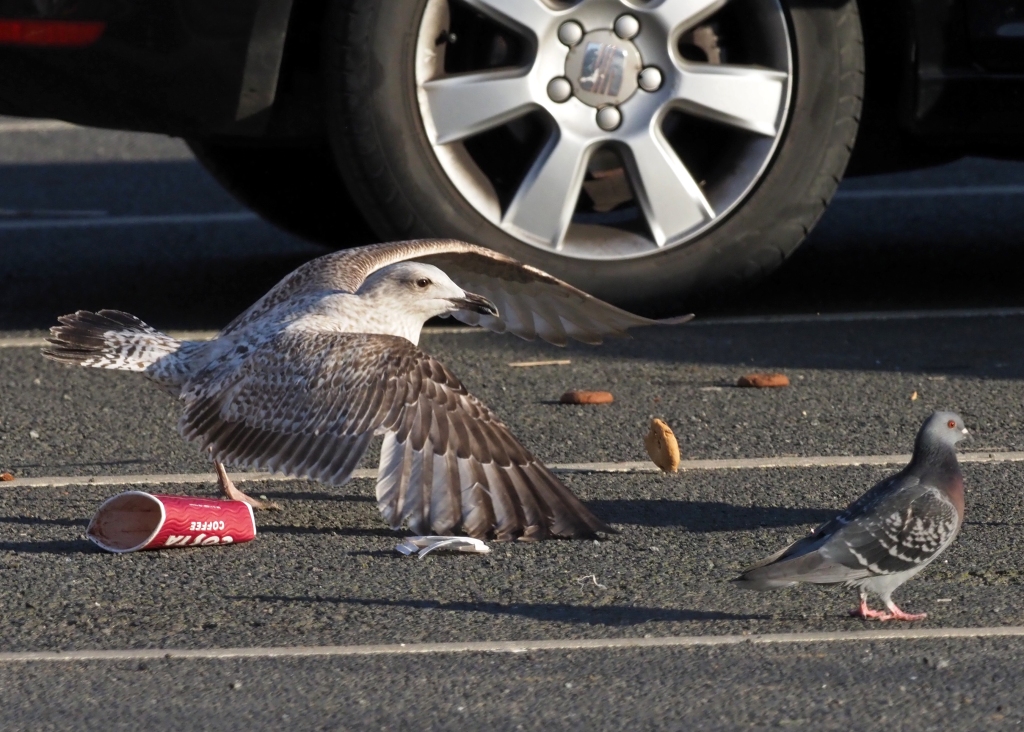

Herring gulls bring a lot of pleasure to visitors I would argue, and although they can also be a nuisance on occasion, they have as much right to be here as we do! As I wrote before, love them or loathe them, they are simply taking advantage of the resources we provide for them.
Links